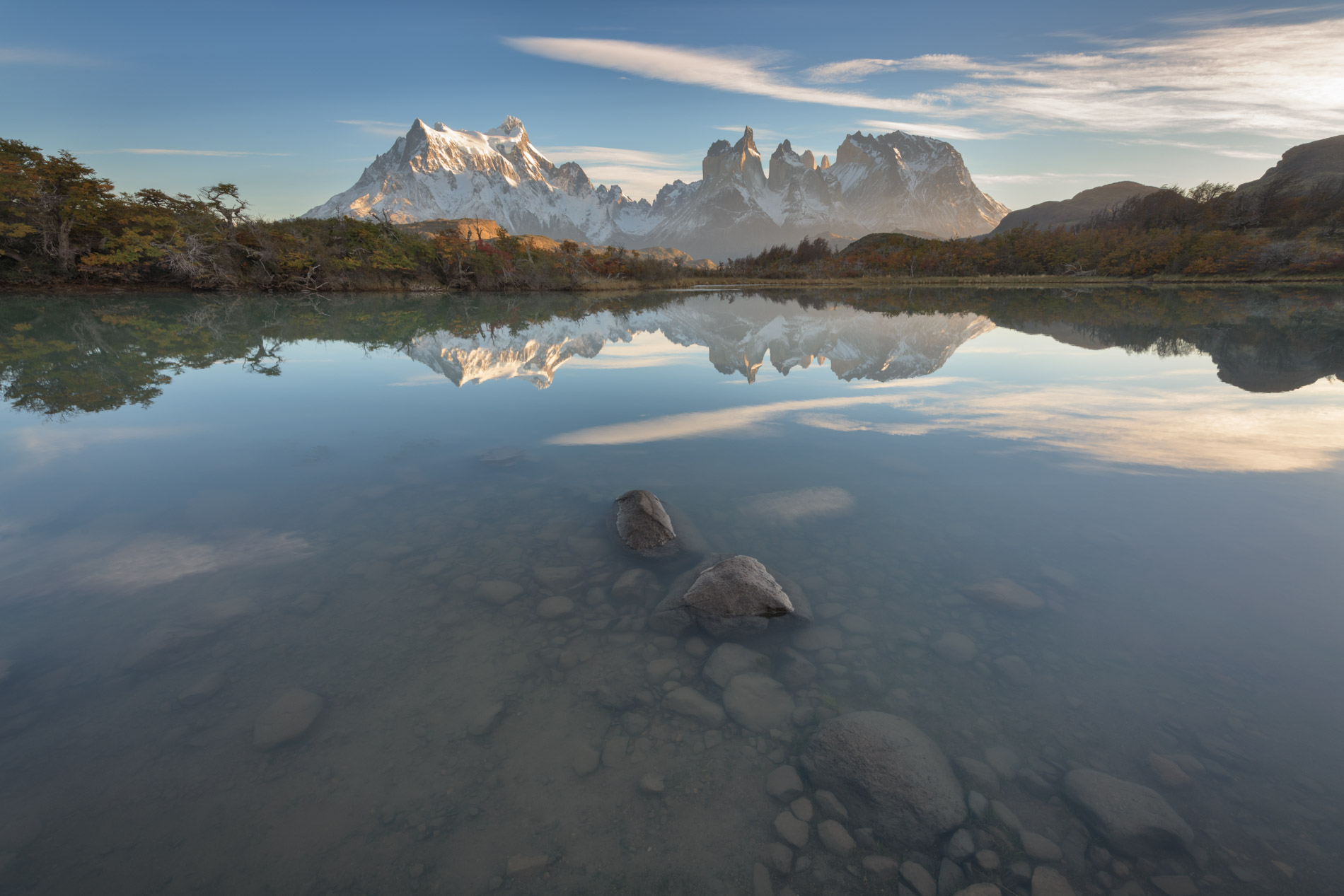Prague, Czech Republic
Photographer travel notes from charming capital of Czech Republic
14 Jan 2020 by Andrey Omelyanchuk
Like many people, when I began planning my trip to Prague, I started by planning the landmarks and historic sites that I wanted to see and photograph. I’d seen the photographs of the Charles Bridge, the city’s most recognizable site, and knew my customers would expect to see that Gothic landmark. Of course, like many other photographers, painters, and visitors to the city, I found the reality is a bit different than I expected — overrun with tourists and souvenir sellers, I had to wake in the wee hours of morning and get to the bridge before dawn to get a photograph when it wasn’t full of people. Looking back at the final results, I think the extra effort was worth it.

Charles Bridge at Sunrise, Prague, Czech Republic
But I also found that the Charles Bridge is far from the only thing to see in the city. This grand, one thousand year-old city is a stunner, and each cobblestoned street and winding alley seems to vibrate with stories of its ancient past. It’s a city in which the present is flush with the past, a place where you can walk its streets and feel the spirits of the people who once made it home.
In the Old Town Bridge Tower, I climbed the ancient steps to the top so that I could capture the bridge from above. In early evening, however, I found the city charming, the ancient Prague Castle golden in the light of early nightfall. The formidable old structure is reportedly the largest castle complex in Europe and it casts an imposing silhouette above the city. It’s a beautiful complex but one with a violent history. It was here, in 1618, that Protestant Bohemian nobles, angered by the suppression of their religion under Holy Roman Emperor Frederick II, threw representatives of the emperor out of the window. The event, known as the Defenestration of Prague, led to the Thirty Years’ War, although the Catholic representatives survived the fall, reportedly cushioned by a pile of manure. There were other notable defenestrations in the city, but it was the 1618 event that gave the castle, or more precisely, its windows, its lasting reputation. It’s difficult for people in the modern world to grasp, this centuries-ago conflict, but it was an immensely destructive one; the dead numbered well into the millions. As a traveler in beautiful modern-day Prague, it’s hard to imagine that it began on the grounds of its lovely castle.

Charles Bridge, Prague Castle and Saint Vitus Cathedral in the Evening, Prague, Czech Republic
On the banks of the Vltava River, I found the Smetana Museum, which is dedicated to the beloved Czech composer Bedrich Smetana. I think of the young Smetana, preternaturally gifted, giving his first performance while just a boy, a love of his homeland already blooming in his heart. Walking the streets of this fairy tale city, it isn’t hard to imagine how it would imprint itself in the mind of a precocious, musically gifted child, filling his mind with the national pride that would later be transformed into his greatest compositions.

Vltava River, Smetana Museum in the Former Waterworks and Old Water Tower at Sunrise, Prague, Czech Republic
Prague is a city full of wonders. Leaving the Charles Bridge and walking into the Old Town, I wandered along the winding Karlova Street. Shoppers love Karlova Street, with its crystal shops, fashion boutiques, and souvenir sellers. I wasn’t interested in shopping so I walked along this meandering street, admiring its architecture and pastel-hued facades. It, too, is a street with stories, including a mad barber whose ghost still reportedly wanders the street he once called home. If you believe in such things, Prague is a city rich with ghosts, with drowned maidens and Templar knights on fiery horses walking its streets. It’s the kind of place, I imagine, which easily gives rise to such stories; with a long, often colorful history, it isn’t hard to imagine that people who clearly possess a literary bent would naturally create stories to explain their city, a place so beautiful and picturesque that it can scarcely be believed.
Farther along Karlova, there is the Church of the Assumption of Mary and St. Charles the Great, another of the city’s architectural wonders. Emperor Charles IV conceived of the grand structure as a way to honor Charlemagne, for whom he was named, and a cathedral worthy of Prague’s role as the capital of the Holy Roman Empire. Construction on the remarkable building began in 1351, but Charles IV’s grandiose plans reportedly scared away a number of would-be architects. The emperor envisioned an octagonal floorplan, a reference to the cathedral at Aachen where Charlemagne was buried. He also envisioned a grand dome over the central part of the structure, a bold undertaking at the time.

Panorama of Karlova Street and Church of Assumption of Mary in the Morning, Prague, Czech Republic
As with many things in Prague, the story of the church’s construction involves some characteristically dark and haunting elements. According to the long-repeated tales, a young architect, eager to prove himself and win the heart of beautiful young woman, took on the emperor’s ambitious design. Building the dome was difficult and there were accidents; rumors that a rival architect was sabotaging the site circulated among the builders. But the young architect would not be swayed. The cathedral would establish him as the city’s premier builder and win him the woman that he loved. And one night, a strange man appeared at the architect’s home, offering him the assurance that the dome he had designed would indeed stand…if only the architect signed an agreement with the man in blood. The strange man, we are led to believe, was of course the Devil. When the day came to unveil the church and its remarkable dome to Charles IV, the architect became so consumed by fear that the dome would collapse that he either hanged himself or ran into the Vltava, depending on which version of the story you believe. Regardless, Charles had his remarkable cathedral, complete with an octagonal floorplan and a dome that stood for many years before it was replaced by a newer one, and the Devil, presumably, gained the architect’s soul. To ensure that the people of Prague realized the importance of the new cathedral, Charles IV (who was rather notorious for “borrowing” religious relics) gifted the church with a remarkable relic: three teeth that belonged to Charlemagne.

Saint Francis Of Assissi Church in the Evening, Prague, Czech Republic
Newer, and with a less troubled history, the Church of St. Francis of Assisi is smaller but no less beautiful. It’s one of the city’s finest baroque churches and home to the second-oldest organ in Prague, a fine instrument built in 1702. Though not the oldest in the city, the organ is the oldest one still played, and one of the most sublime moments I experienced in Prague was attending one of the famous organ concerts at St. Francis, an event held continuously since 1993 — a daily event from Easter to November. And while the church’s interior is lovely, I was transfixed by the view from outside the church, its verdigris dome overlooking the ancient city. Prague has many ways to steal a person’s heart, and I wanted to see them all.
View Prague galleryTags
Category
Related Posts
Login Required: Please login or create an account to post comments.



